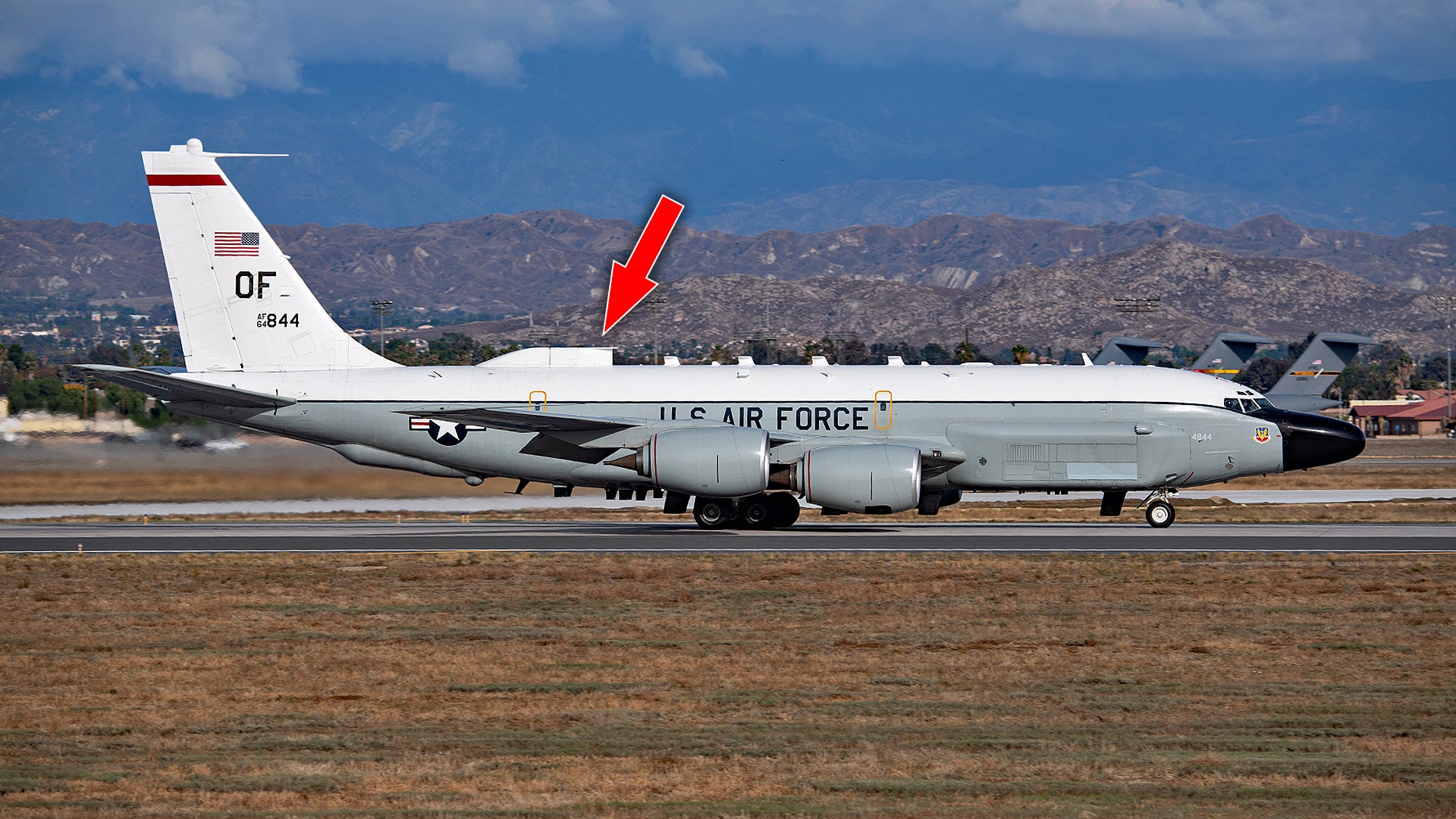One of the USAF’s prized and highly versatile RC-135V/W Rivet Joint electronic intelligence gathering aircraft has appeared at March Air Reserve Base (ARB) in California sporting a very prominent and never seen before modification. In place of a wideband secure satellite communications array that was installed roughly a half-decade ago, a new bizarrely shaped antenna system has been installed. It has a thick vertical base that is elongated with a flat leading edge on top. It’s not apparent what communications system this is, but the one that was removed to accommodate it was far from easily expendible.
The reconfigured Rivet Joint was departing after making a fuel stop at March ARB when aviation photographer Dan Stijovich snapped some great photos of it. The RC-135, which is normally based out of Offutt AFB in Nebraska, was operating under the callsign SHINER 50 and was flying from Greenville, Texas where L3Harris ISR Systems is based. They would be the most likely candidate for making such a communications modification on the jet, so that makes perfect sense.
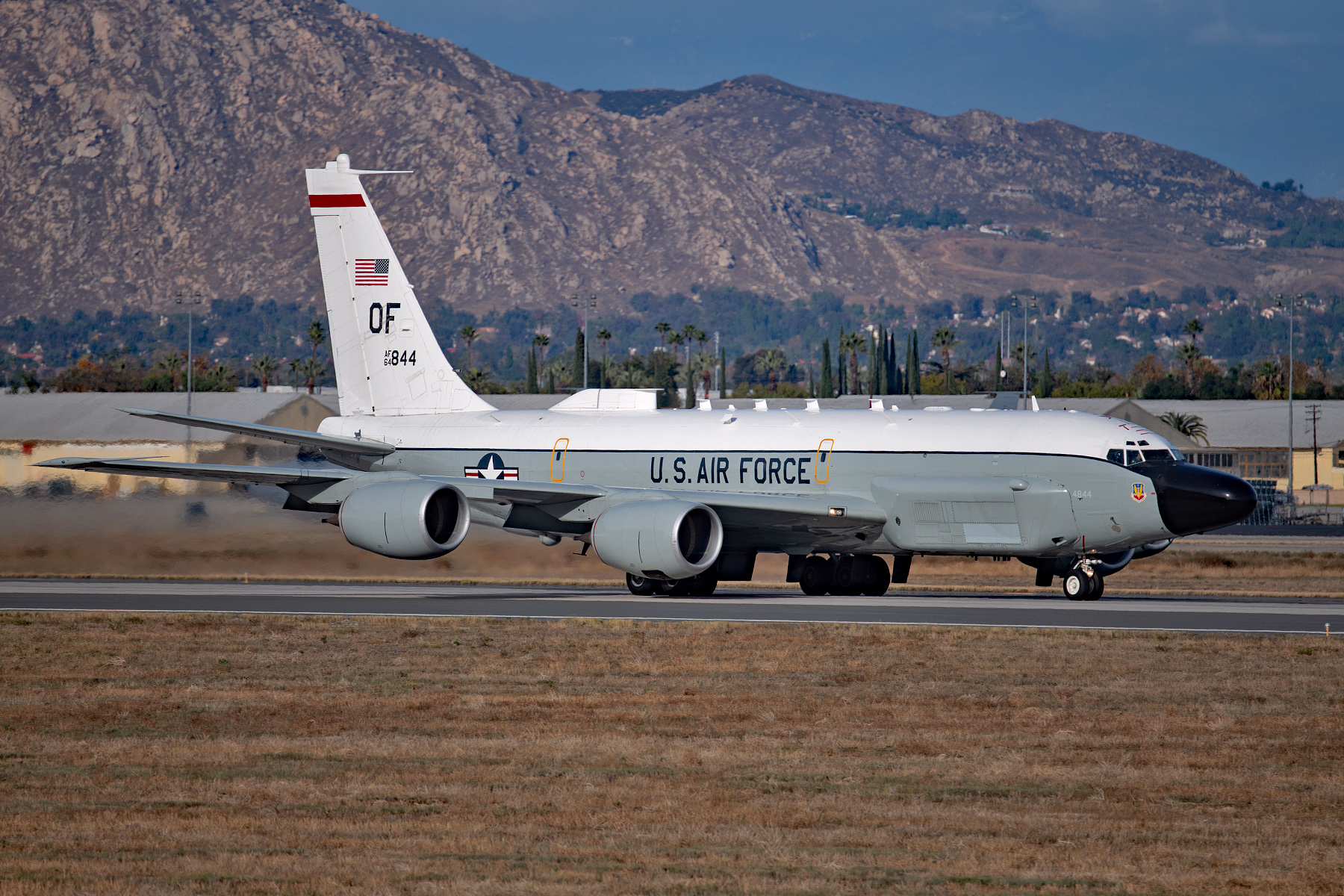
The RC-135V/W fleet received the satcom antenna that this new one replaced around five years ago. Similar installations have subsequently shown up on other large strategic aircraft, like the E-6B Mercury and VC-25A “Air Force One” fleets, among others, which you can read all about in this past post of ours.
Getting the Rivet Joint high-bandwidth secure beyond-line-of-sight connectivity was clearly a highly beneficial initiative. It would allow the jet to potentially send large amounts of its electronic intelligence all around the world instantly for further review and near real-time exploitation.
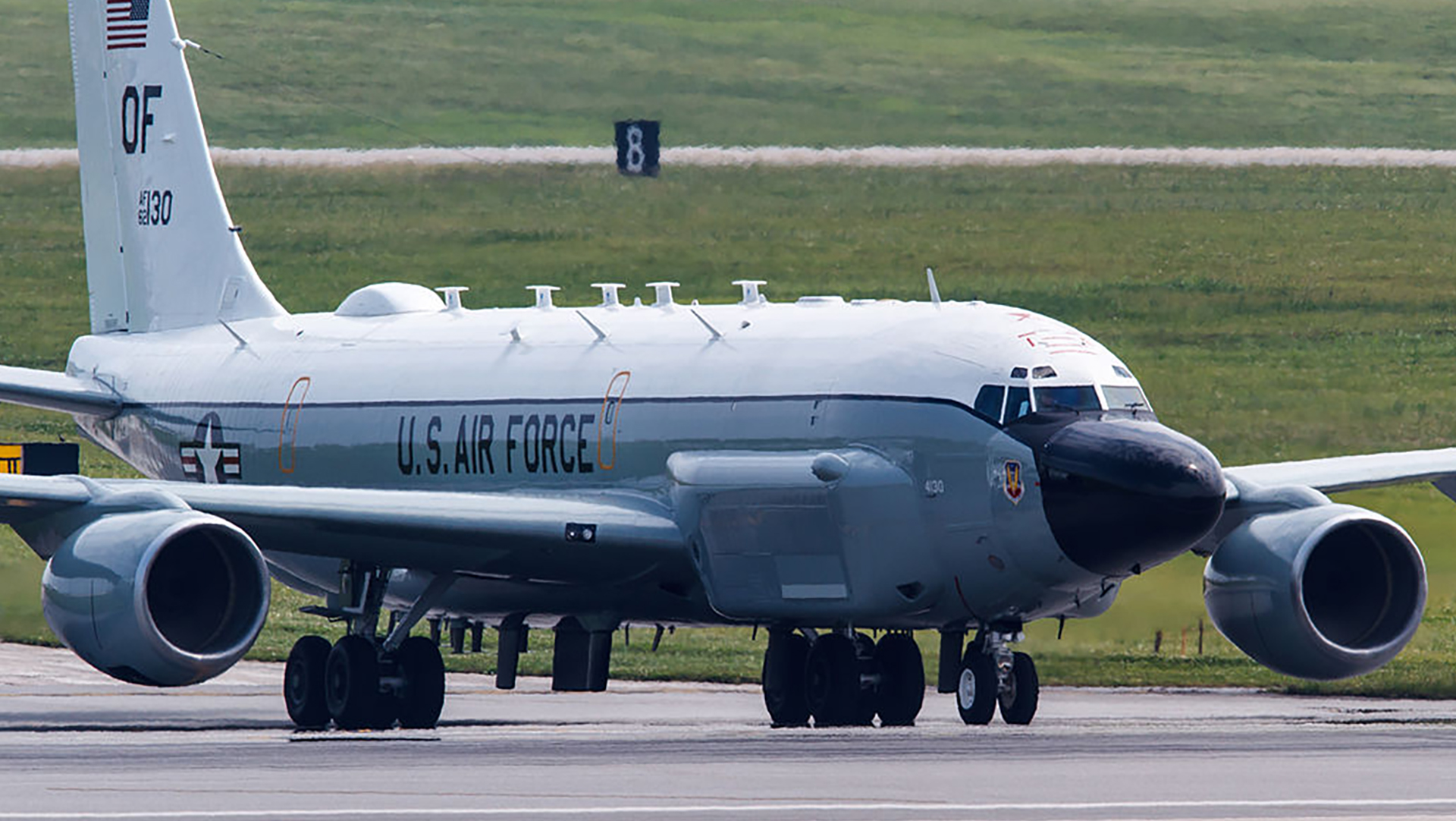
Rivet Joint not only detects, geolocates, and classifies enemy air defense emitters, but it also provides communications and other forms of signals intelligence. The jet has crypto and language experts onboard to process some of this information in real-time, but being able to rapidly distribute more of it to many other eyes and ears, including intelligence analysts and battlefield commanders halfway around the globe, is a huge force multiplier.
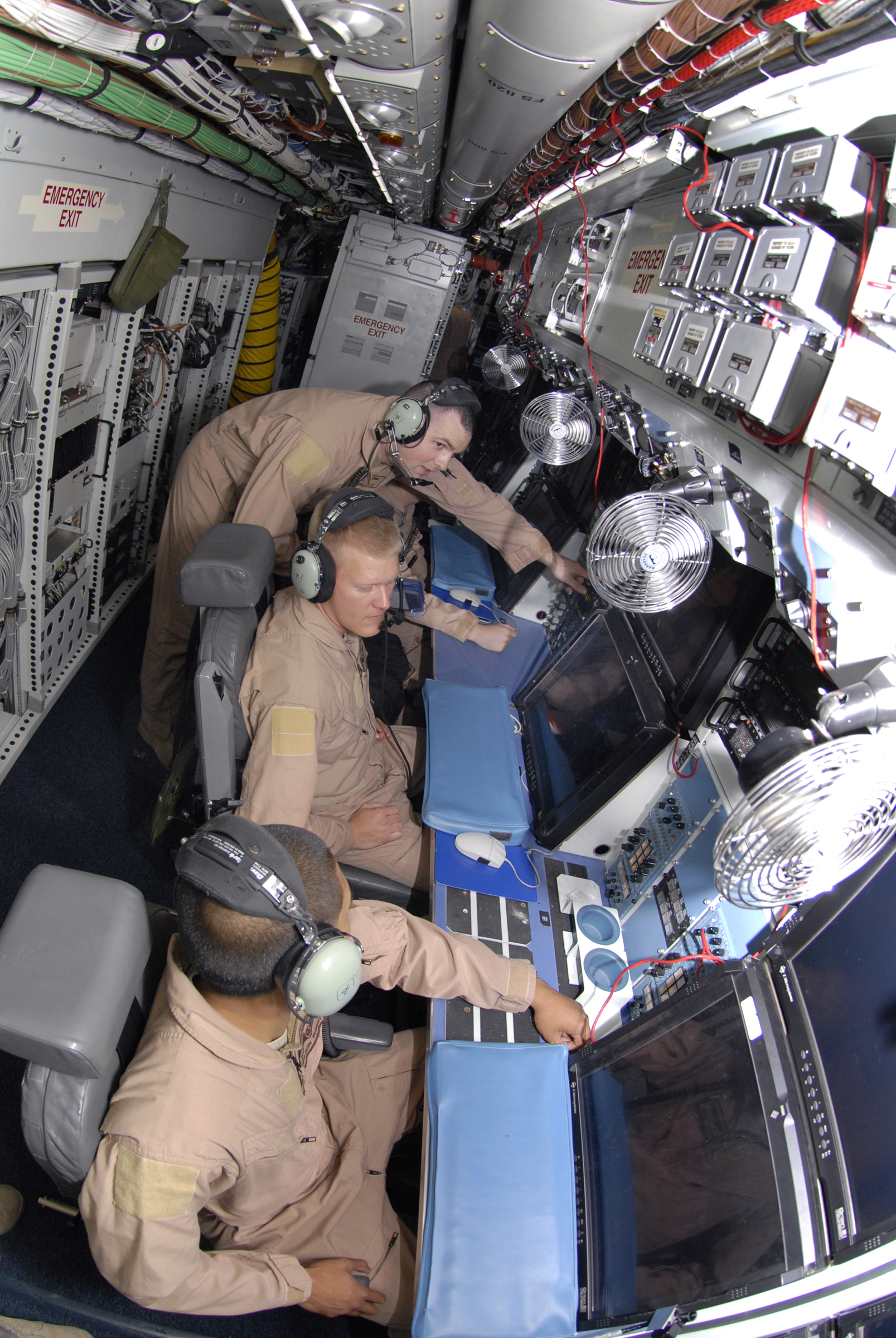
Also, just having better secure beyond-line-of-sight connectivity for a wide variety of other reasons is a huge plus worth the investment itself. This is especially true considering how long RC-135 missions last and how close to they come to hostile territory.
With this in mind, we can only assume that this strange new array either replaces the existing one or it offers another function that is so important that other enhanced capabilities were jettisoned to obtain it.
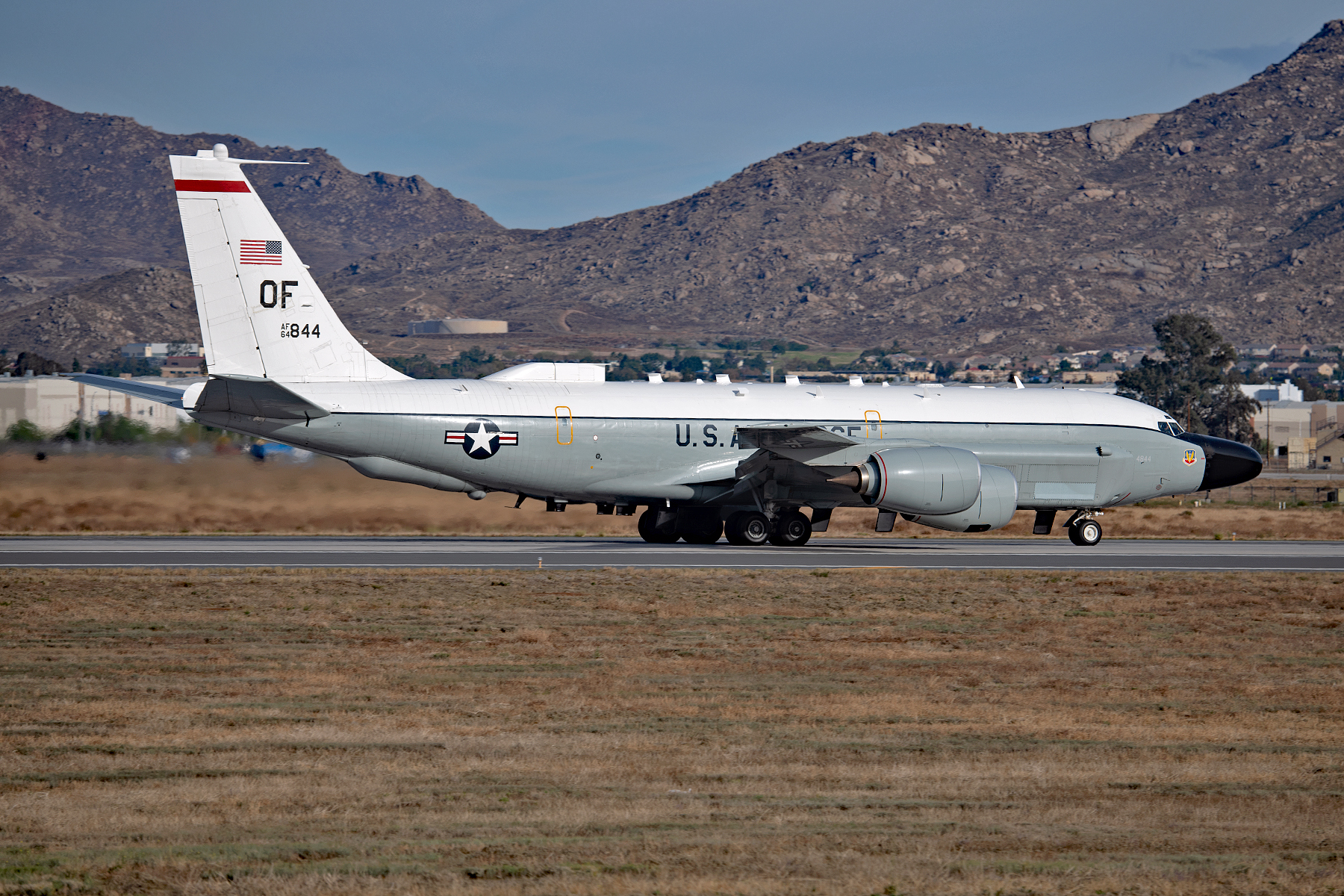
After speaking to sources familiar with the Rivet Joint airframe, we were told that there probably would also be a fairly substantial aerodynamic penalty for this system. For an aircraft that is already a flying antenna farm of sorts, this isn’t an alien development. But once again, this reality points to the fact that its ungainly configuration must be worth at least some tradeoffs.

It’s amazing how these ancient jets continue to be updated with new capabilities and soldier on flying highly sensitive missions day-in and day-out around the globe. The aircraft in question is 55 years old. As it sits now, there is no end in sight for the RC-135 Rivet Joint fleet and for most the other C-135 derivative strategic intelligence-gathering aircraft that continue to provide a steady stream of some of the country’s most critical intelligence products.
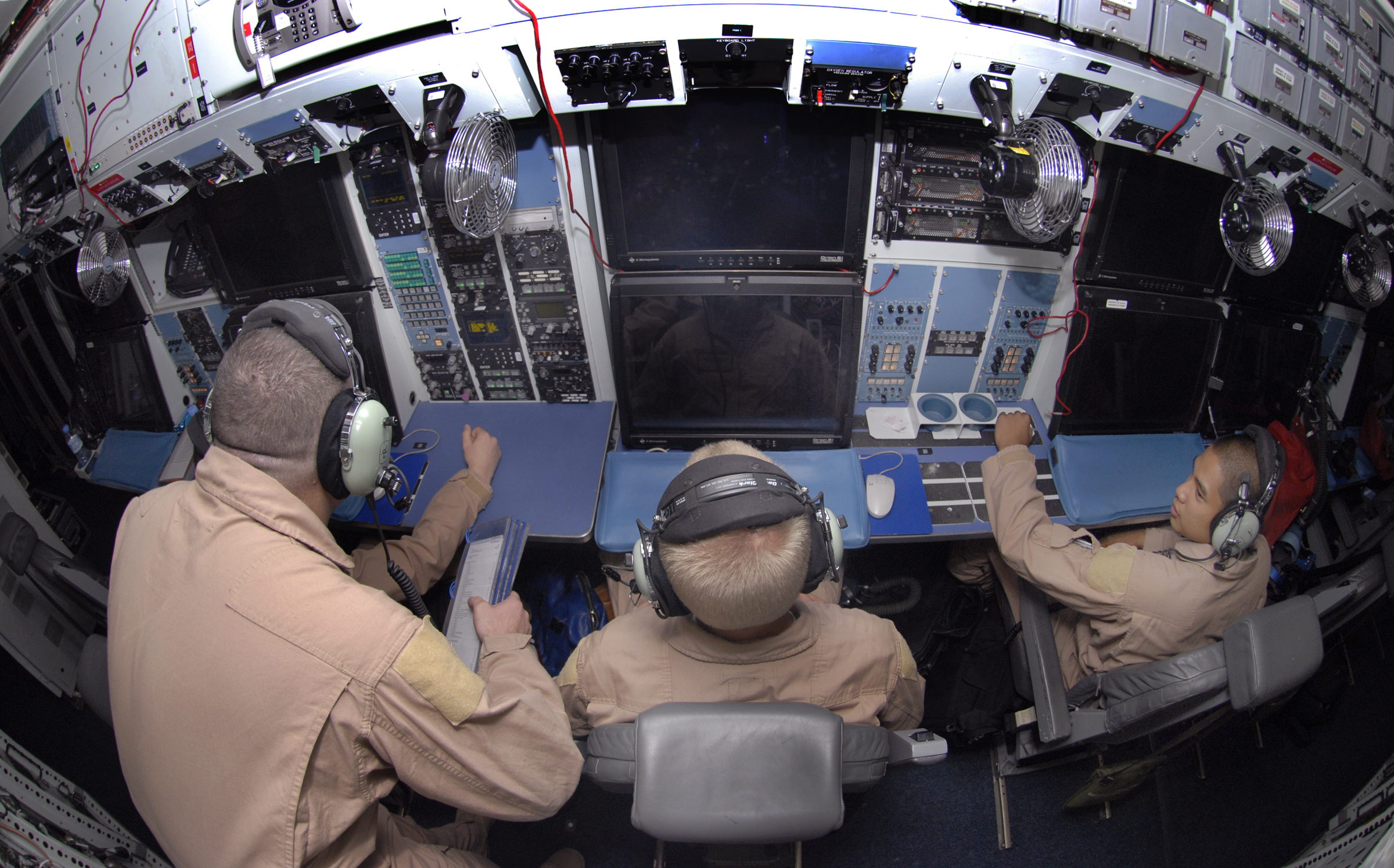
At least when it comes to technological capabilities, not the reliability of the airframes themselves, this upgrade makes it clear once again that the Rivet Joints just keep getting better with age.
A big thanks to Dan Stijovich for sharing his shots of the improved Rivet Joint with us, you can check out more of his photos here.
Contact the author: Tyler@thedrive.com
